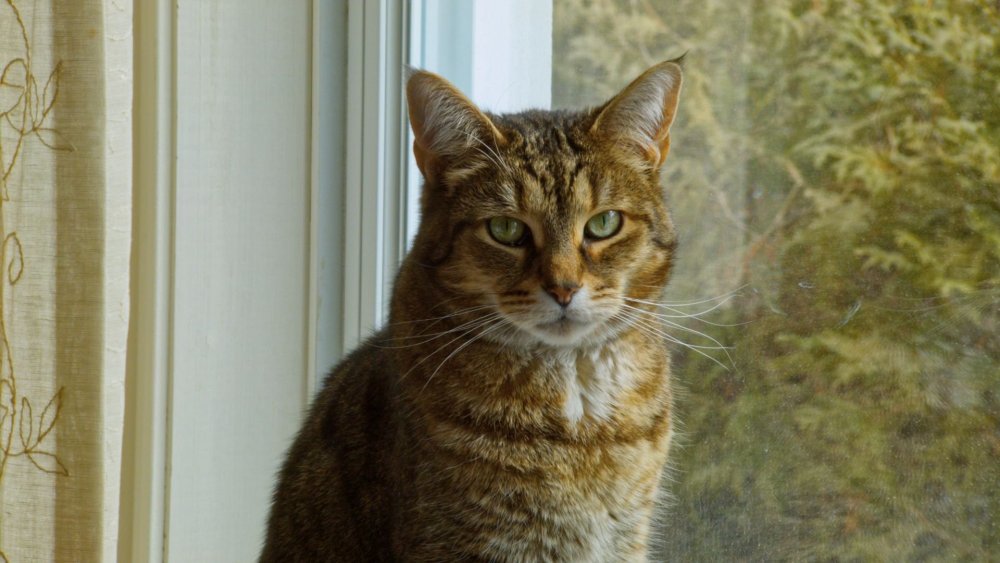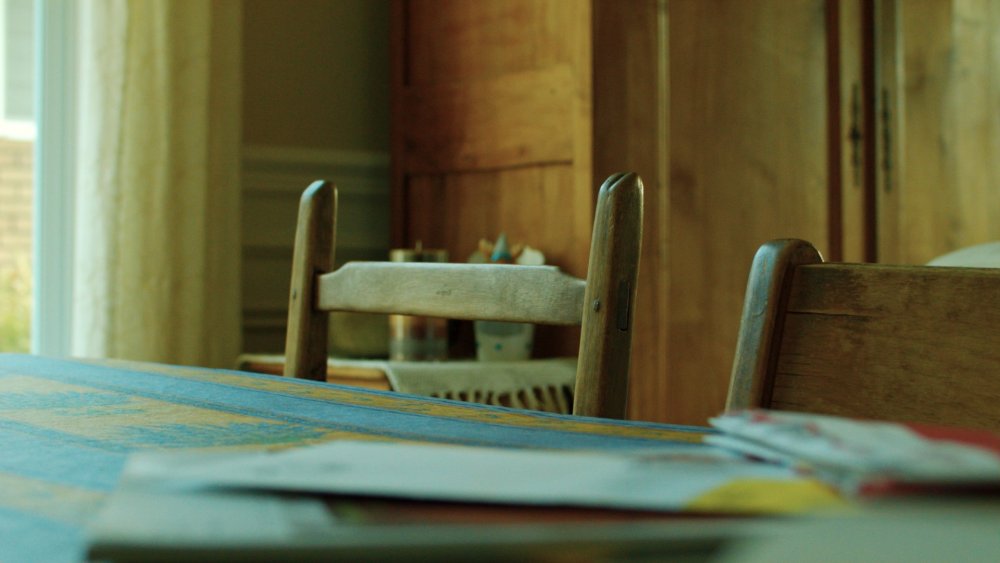
bjohn
Members-
Posts
319 -
Joined
-
Last visited
Content Type
Profiles
Forums
Articles
Everything posted by bjohn
-
This really has me tempted to finally get a BMPCC 4K. The rolling shutter in the 6K is accounted for in the gyro data, which is nice; on the Blackmagic forum one of the developers noted that you may want to use a smaller shutter angle (faster shutter speed) like 45 degrees for best results and set frame guides to the crop that will occur in stabilization. What I don't understand is why, if this kind of system can be built into a camera, nobody seems to have developed a very small, camera-mountable gyro system that could record camera movement data, feeding it into the camera the same way timecode is fed in so the data are embedded in the recorded video file. Or maybe someone has done this and I'm just not aware of it? It would be great to not have to use a gimbal or glidecam with my original BMPCC or BMMCCs.
-
Another still from some tests with the BMMCC, this time with an Angéniux 17.5-70mm zoom (Super 16, PL mount). I love this lens but it has by far the most extreme focus breathing of any lens I've used...kind of amazing it was sold as a cinema lens.
-
It's funny: I shot and graded this a year ago and didn't really notice the green cast (I'm partially red-green colour blind), but it's much more obvious to me now because I had cataract operations on both eyes in the past year and I now effectively have the eyes of a 20-year-old. The effect of the cataracts on colour was really apparent to me after my first operation, on my left eye, because I still had a cataract in my right eye and could compare colours easily just by shutting one eye or the other. The difference was incredible. I now want to go back and re-grade everything I've ever done because the colours all look wrong to me now. 😉
-
Here's a still from one of my tests (during pandemic confinement) of the Zeiss ZF.2 Distagon 35/1.4 on BMMCC
-
I wanted the Contax Zeiss 35/1.4 but settled for a secondhand ZF.2 (with a cine mod) because it was so much cheaper and I read that it's essentially the same glass. I'm not so sure, though, as I've read reports that the Contax Zeiss has more microcontrast. Anyway I bought that lens during the pandemic so it hasn't gotten out much yet; most of the footage I've shot with it has been tests at home. I'll get out more with it in the next few months and will post some clips to the other thread when ready.
-
FYI, the entire set of "vignettes" from which the "trailer" was developed (this film was actually an extended clothing commercial, believe it or not) are available here: https://vimeo.com/user19303281 They're worth watching. The score is really lovely as well; they had a top-notch crew for every aspect of this project.
-
Ah, I found the reduser discussion, it's still there, just the URL has changed: https://www.reduser.net/forum/shooting-red/cinematography/94365-sleepwalking-in-the-rift-anyone-know-what-this-was-shot-on
-
Whenever I think of the possibilities of 8 bit I come back to this gorgeous short film, Sleepwalking in the Rift, shot a decade ago on a Canon 5D Mark ii. It famously fooled a DP in New York who insisted it must have been shot on film (the discussion thread on reduser appears to have been deleted, unfortunately; the colorist who worked on the footage confirmed that it was shot on a 5D Mark II).
-
The dealbreaker for me for the fp as a stills camera is the electronic-only shutter: not only are there well-documented rolling shutter artifacts when shooting fast-moving objects, but you also get the usual e-shutter bokeh artifacts when using high shutter speeds (over 1/500 sec), so you'd need to use ND filters for stills if you like shooting wide open or close to it in daytime. It appeals to me for filming due to the true cinema settings (shutter angle instead of shutter speed, etc.) since I'm used to shooting on cinema cameras, but apart from the higher resolution and ability to use some of my favorite lenses with less of a crop factor I'm probably better off sticking with my original BMPCC and Micro Cinema cameras.
-
The 3:1 compressed raw is a good compromise between ProRes HQ and uncompressed CDNG raw; you get nearly all the latitude of uncompressed raw without the ginormous file sizes. I've been shooting 3:1 raw on the BMMCC for a few years now and liking it, although Prores HQ is no slouch and can take a lot of grading and adjustment of white balance etc. as kye noted above. My favourite monitor with this camera is the SmallHD Focus, which is discontinued but presumably very much available on the used market. I also have the Atomos Shinobi, which works but I much prefer SmallHD (better UI, more and better-implemented features). I have the 5" video assist as well but only use it if I need a recorder. In addition to using it for video, I've been having fun using it for stills: the actual CDNG files are only 2 megapixels in resolution so it's far from ideal, but if I'm shooting portraits I'll bring my BMMCC along and just let it run, going through the footage afterward and stopping on a good frame, grading it in Resolve, grabbing a still, exporting a TIFF, and the upscaling it in any photo processing app like Affinity Photo or ON1. When your camera is capturing 24 or more frames per second, there's a good chance it'll catch the moments you just missed with a stills camera. If you set the shutter angle to 45 degrees you'll get terrible video (herky jerky like the beginning moments of Saving Private Ryan) but better stills since they'll have less motion blur. Unless you want motion blur, which I sometimes do.
-
There was a pre-review a while back on Newshooter; see the comments as well: https://www.newsshooter.com/2022/01/16/snoppa-rover-camera-dolly/
-
If you were to set aside autofocus (something I have never used in video and likely never will; I don't even have any lenses capable of it apart from one Panasonic that I don't use anymore), how do these two (GH6 and OM1) stack up against each other?
-
It was Jane Bown's camera too: https://www.anatomyfilms.com/jane-bown-65-years-with-olympus/ I've been a Jane Bown fan forever, and it's worth reading the article to learn about her minimalist approach: she took some of the most memorable portraits of the 20th century, all with natural light (she never carried a flash), never used a light meter, and brought her two cameras (one with a Zuiko 50mm and the other with a Zuiko 85mm) to her shoots in a shopping bag.
-
It's not so much a question of accuracy but 10 bit vs. 8 bit and the desire to bypass the operating system, which is the point of using those Ultrastudio monitors. There is a separate question, of course, of whether this is overkill but much depends on the destination(s) for these videos. If it's just youtube I'm not sure it's worth the effort; for broadcast or cinema where you have to meet standards then obviously it is. There are examples of successful corporate and youtube videographers who just use their laptops or an uncalibrated monitor and are happy enough with the result, but everyone's priorities and standards are different.
-
You would, of course, also have to travel with a calibration device (they're pretty small, so not a major inconvenience) because you'll have to recalibrate it in every environment in which you work. Even if you always work in a perfectly dark room, if you're anywhere near a wall the monitor itself might cause enough reflections to alter the environment compared with your previous location. I think 12-14 inches would be the smallest I'd want. Some photographers use 12-inch iPads or Microsoft Surface tablets for photo editing and grading in the field, so I guess 12 inches is feasible but I'd personally prefer something bigger.
-
I don't use Fuji but I've had good luck with two VNDs on my Blackmagic Micro Cinema and original Pocket Cinema cameras: 1. SLR Magic VND (1.3 to 6 stops); it looks like Formatt-Hitech may be offering a rebranded version of this one as well as the one they offer looks nearly identical. The locking mechanism is handy for dialing in a setting and locking it there. 2. B+W XS Pro variable ND (1 to 5 stops). Less bulky than the SLR Magic; this one was recommended to me by a cinematographer in Germany who said it had the least impact on colors of any VND he'd used. I typically use VND with stills-camera lenses with stepped aperture rings as I can get more fine-tuned and smooth control of exposure. I also use them when I need to move fast and/or light. I have plenty of good footage shot with VNDs...would it have been better if I'd used my fixed ND filters? Probably but if having the VND made the difference between getting the shot and missing it I'll accept the compromise.
-
They won't say, but I did read somewhere (on a forum, probably) that they were pressured into doing it by a "big company" that threatened legal action. It is a good mic; their wide-cardioid CM-4 is pretty legendary as well. They have relatively high noise floors compared with comparable mics from Sennheiser and Schoeps, but they are about 10 times cheaper.
-
One apparent casualty of this rebranding was the excellent-value-for-money Line Audio OM-1 microphone, which was required last year to be renamed the "Omni-1" microphone. http://www.lineaudio.se/OM1.html
-
Now that it's officially discontinued it's going to start becoming a collector's item!
-
He shot it in ProRes and added halation and film grain in Resolve 17. It looks great to me.
-
Some nice family beach footage shot recently by the cinematographer Tiago Pimentel on original BMPCC on a Crane3s gimbal with a Zeiss 21mm ZF.2 lens; he graded it in Resolve and used one of Resolve's built-in Kodak emulations.
-
I'm not sure: they're marketing this camera mainly to cinematographers, most of whom aren't interested in full-frame as it's still not used much (relative to Super-35) in cinema, but agree that it would be more versatile and could appeal more to people working in other genres.
-
From what I've read, the BMMCC actually used a slightly updated version 2 of the sensor used in the original BMPCC, it's not exactly the same. Dmitry Shijan verified it in the Fairchild spec sheets; see here: https://forum.blackmagicdesign.com/viewtopic.php?f=2&t=94230#p525352 But if you read further down that thread you'll see that there's still some debate about it.
-
Yes, I had 2016 as the start date for this camera. I'm digging in and sticking with my two BMMCCs (plus an original Pocket). After years of hunting and a few near successes, I finally got a near-mint 1970s Angénieux 17.5-70 zoom complete with PL to MFT adapter and step-up ring for my filters and can't wait to start using it. The few indoor tests I've done so far look very promising; it is parfocal but the focus breathing is extreme, more than on any other lens I've used. Not the end of the world, as the rendering and bokeh are worth it. Another lens that really looks amazing with this camera is the Zeiss "Classic" 35/1.4 Distagon T; I have the Nikon-mount ZF.2 version but the Contax-Yashica would be excellent too and apparently has a bit more microcontrast. I'm using mine with a Metabones Speedbooster for the BMD Super 16 cameras; this Zeiss is the closest thing I've seen to the old Zeiss Superspeed look (minus the triangular OOF highlights of course) but much more affordable.





